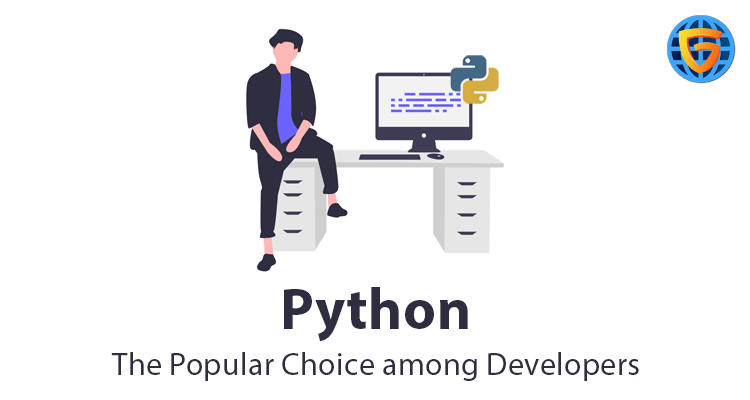According to research, it has been found out that Python left Java behind to become the second most preferred programming language by developers and was ranked fourth after JavaScript, HTML, and SQL as the most widely used programming language. Python has managed to evolve while staying true to its core principles and its growing popularity amongst programmers seemed a good time to understand how it became one of the most impactful languages in the world.

Origin
Guido van Rossum was the one who originally developed Python in the late 1980s. With its simple, natural language syntax and grammar, Python has increased the productivity of programmers and brought programming back to life. Python is designed to have a small base language with a large standard library and an easily extensible interpreter, allowing programmers to add programmable interfaces to existing applications. Python’s approach allows coding standards, styles, and recommendations to be enforced, thereby increasing the readability and maintainability of projects.
Introduction of Python
Python version 1.0 introduced working programming tools including lambda, reduce (), filter (), and map (). Moreover, Python has become the object-oriented programming language, which aims to make programming more accessible, encouraging fundamental knowledge of coding. In the age of Visual Basic and C / C ++, with the rise of Java, Python was able to play a leading role.
A Maturation Period
Python version 2.0 was released in 2000, where list comprehension was introduced. At the end of the subsequent year, Python 2.2 brought about the unification of the language's types and classes under a single hierarchy, allowing Python's object model to be purely and systematically object-oriented. With the rapid increase of Java in the commercial application development world, Python has found niches in managed data and infrastructure applications. And thanks to interoperability with other languages, even Java programmers have started to use it for some parts of their applications in order to increase their productivity.
Big data, machine learning, and data science
In the middle of the 2000s, there had been an exponential increase in the amount of data that companies stored, tracked, and managed. Due to the ease of use of Python, the young companies found it to be the most cost-effective solution for early development, making it the preferred language for social media data management. As mentioned earlier, Python has increased the productivity of programmers and brought programming back to life, saving time and money as compared to languages like Java. Python was competing with R as a language of choice for the learning of the machine and the science of data. As a programming language, Python was much more powerful than the R language and the only preference for machine learning code in large-scale systems. Big tech companies like Facebook, Google, and Netflix have quickly become pioneers in machine learning and data science. Scalable tools, coding conventions, best practices, algorithms, and solutions have been developed by these companies using Python.
A primary programming language
Since 2014, it has become clear that Python was used as a key programming language for students attending universities, high schools, and areas of codification around the world. Predicting a rapid increase in the development of AI-based applications, almost everyone started learning to code. High school and college were developing programs to teach children to code in Python. At the same time, mathematics teachers are increasingly interested in visualizing Python tools that provide the test in the child's mind of how things work. In the child’s mind, they can rotate visualizations to look at them from different angles that ultimately unleash creativity in their thinking.
The future of Python
Over the years, Python had been the booming programming language, whose rapid rise was mainly due to its rigorous adherence to its philosophy: to be a dynamic language, multi-paradigm, extensible, open-source, simple in syntax, and programmed to be maintainable. It's no wonder that Python has one of the largest programming communities in the world. In the coming years, Python will be used as the primary language alongside Java for the development of commercial applications in many industries.
Join Python Course in Noida offered by the best python training institute in Noida, GICSEH.
Join GICSEH today!!